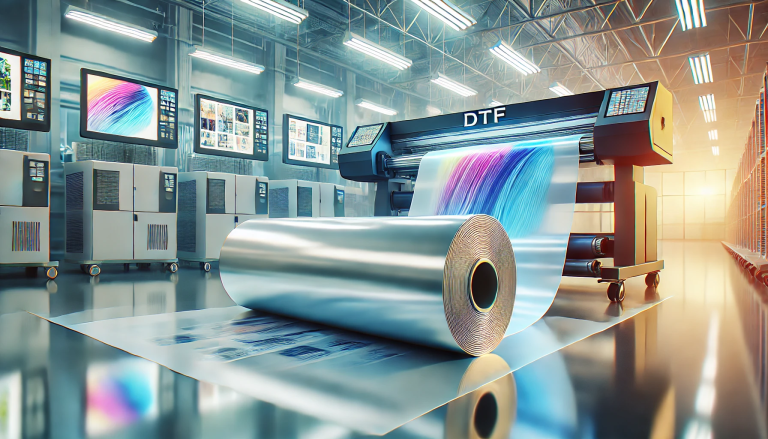In the rapidly evolving world of textile printing, the introduction of Direct to Film (DTF) PET Film Transfer technology represents a significant leap forward. This innovative method has not only democratized access to high-quality printing but also pushed the boundaries of creativity and sustainability in the fashion and customization industry. In this article, we’ll delve into the mechanics of DTF PET Film Transfer, its advantages over traditional printing techniques, and why manufacturers are swiftly adopting this revolutionary technology.
The Mechanics of DTF PET Film Transfer
DTF PET Film Transfer technology involves printing a design onto a special film (usually made of Polyethylene Terephthalate or PET) before transferring it onto a fabric. The process is straightforward yet sophisticated. First, a design is digitally printed onto the PET film. Then, a powdery adhesive is applied to the print. This film is then transferred to the desired textile under heat and pressure, resulting in a high-quality print that is both durable and vibrant.
What sets DTF PET Film Transfer apart is its ability to print on a wide array of fabrics without requiring pre-treatment. This capability simplifies the printing process and opens up a world of possibilities for fabric customization.
Advantages Over Traditional Printing Techniques
Versatility in Material Compatibility
One of the standout features of DTF technology is its compatibility with a diverse range of fabrics, including cotton, polyester, silk, and even leather. This versatility is a game-changer for manufacturers and designers who previously had to navigate the limitations of fabric-specific printing techniques.
High-Quality and Durable Prints
DTF PET Film Transfer produces prints that are not only vibrant and detailed but also highly durable. The prints are resistant to washing, fading, and cracking, making them ideal for everyday wear and high-use textiles.
Eco-Friendly and Cost-Effective
The DTF process is more environmentally friendly compared to traditional printing methods. It reduces water usage and eliminates the need for toxic chemicals used in screen printing. Additionally, DTF printing is cost-effective, especially for small to medium-sized runs, as it requires less setup time and materials.
Streamlined Production Process
DTF PET Film Transfer simplifies the production process. Unlike screen printing, which requires multiple screens for different colors, DTF printing can achieve full-color prints in a single pass. This efficiency not only speeds up production but also reduces labor costs.
The Impact on Manufacturers
Manufacturers are rapidly adopting DTF PET Film Transfer technology due to its numerous benefits. The ability to produce high-quality prints on a variety of materials without extensive setup or cleanup is a significant advantage. This efficiency allows manufacturers to offer a wider range of products and respond quickly to market trends and customer demands.
Furthermore, the sustainability aspect of DTF printing aligns with the growing consumer demand for eco-friendly products. Manufacturers leveraging this technology can market their products as not only customizable and high-quality but also environmentally responsible.
Future Prospects
As technology continues to advance, the potential for DTF PET Film Transfer is boundless. Innovations in ink formulas, film materials, and printing equipment will further enhance the quality, durability, and sustainability of prints. Additionally, as the fashion and textile industries move towards more personalized and on-demand production models, DTF technology is well-positioned to meet these evolving needs.
In conclusion, DTF PET Film Transfer technology is revolutionizing the textile printing industry. Its versatility, quality, and eco-friendliness make it a preferred choice for manufacturers and designers alike. As this technology continues to evolve and improve, we can expect to see even greater advancements in textile customization, sustainability, and production efficiency. The future of textile printing is bright, and DTF PET Film Transfer is leading the charge.



